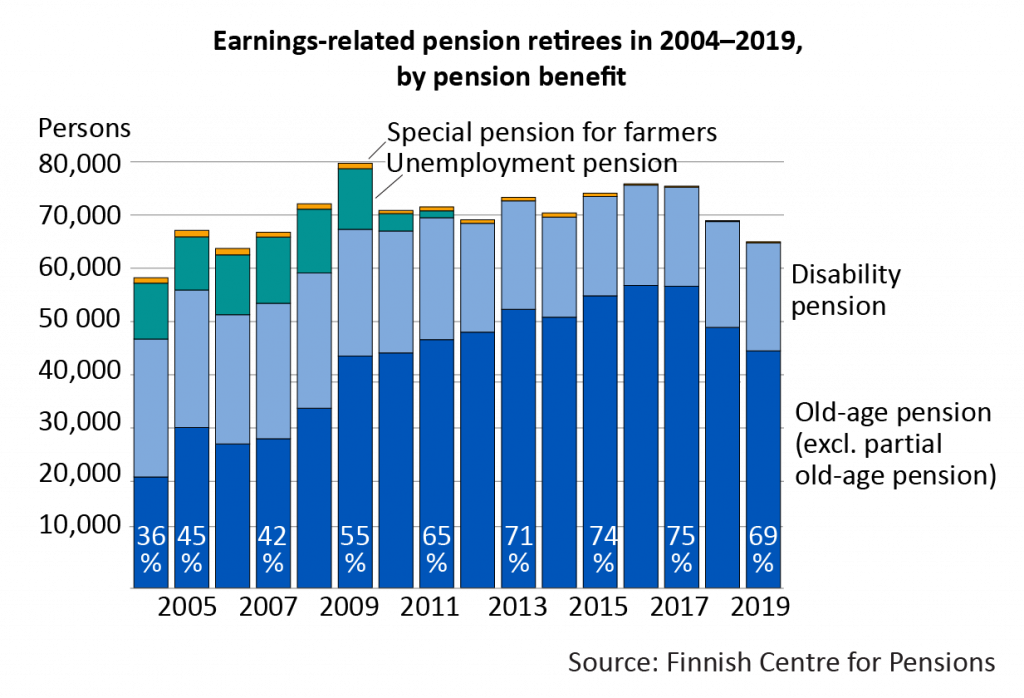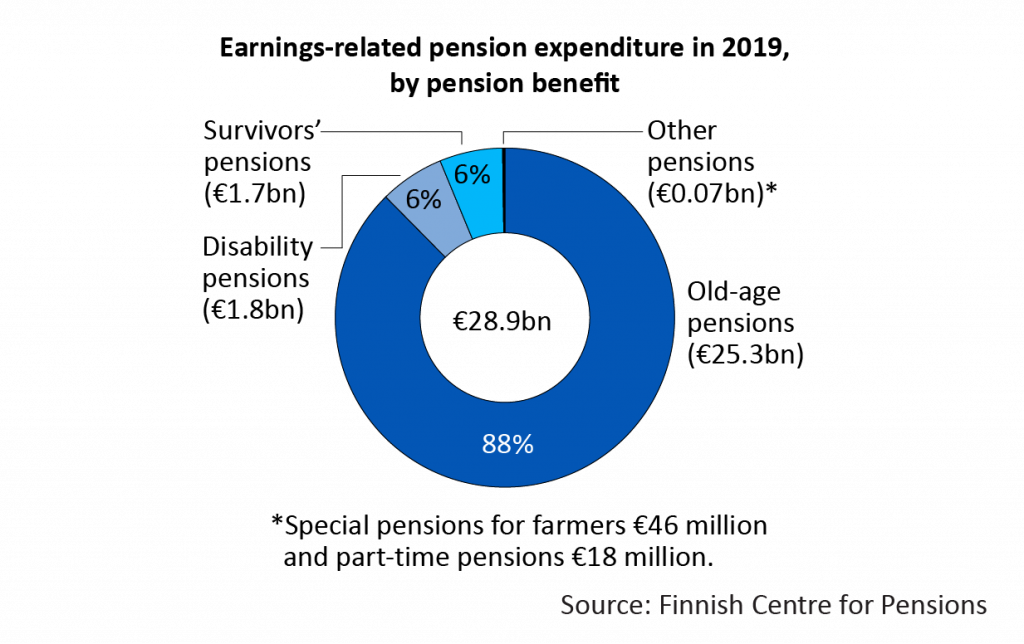Number of new old-age retirees falls again

Earnings-related pension payments in 2019 amounted to 29 billion euros, up one billion from the year before. There were 44,500 new old-age pension retirees, marking a decrease of 9 per cent from 2018. The main reason for the drop in the number of new old-age retirees is the pension reform decision to progressively raise the retirement age.
In 2019 the number of new earnings-related pension retirees reached 65,000, 44,500 of whom retired on an old-age pension. Women slightly outnumbered men. The number of new old-age retirees fell by over 4,000 from 2018, marking a decrease of 9 per cent.
The downward trend over the past couple of years is due to the 2017 pension reform decision to progressively raise the retirement age. What is more, most baby boomers have by now retired.
At the same time, an increase was recorded in the number of disability pension retirees. In 2014–2017 the average annual number of new disability retirees was around 19,000, but in 2018 and 2019 that figure edged up to around 20,000.
In recent years disability retirement due to depression has increased most particularly among young women and women nearing retirement age.
“The number of new disability pension retirees has increased particularly in the age groups over 60 and under 45,” says Tiina Palotie-Heino, Statistics Manager at the Finnish Centre for Pensions.

At year-end 2019 there were 1.5 million earning-related pension recipients, 830,000 (55%) women and 680,000 (45%) men. The number of earnings-related pension recipients was up by almost 12,000 from 2018.
Old-age pension long the most common route to retirement
In 2019 almost 70 per cent of all new earnings-related pension retirees retired on an old-age pension. The proportion of old-age retirees was at its highest in 2016 and 2017, when they accounted for three-quarters of all new earnings-related pension retirees.
In 2019 roughly half (49%) of new old-age retirees retired at age 63. The average age of new old-age retirees was 64 years.
“The realisation of the need to extend working lives began to dawn in the early 2000s. Steps were taken to gradually block avenues to early retirement. At the same time, greater emphasis was placed on working capacity. All this has contributed to make old-age pension the most common route to retirement,” says Palotie-Heino.
Share of earnings-related pension expenditure continues to rise
In 2019 total pension expenditure was 32 billion euros. Earnings-related pensions amounted to 29 billion euros (90%) and Kela pensions to 2.3 billion euros (7%). Payments of optional pensions and special provisions pensions came to around one billion euros.
Earnings-related pension expenditure as a proportion of total pension expenditure has increased by around five percentage points in the past decade. The figure was 85 per cent in 2009 and 75 per cent in 1999.
Old-age pensions accounted for over 25 million euros of earnings-related pension expenditure. Disability pensions amounted to 1.8 billion euros and survivors’ pensions to 1.7 billion euros. Special pensions for farmers came to 46 million euros and part-time pensions to 18 million euros.

